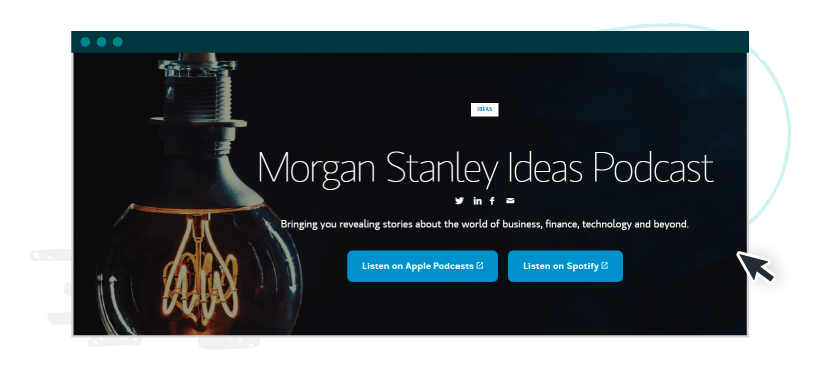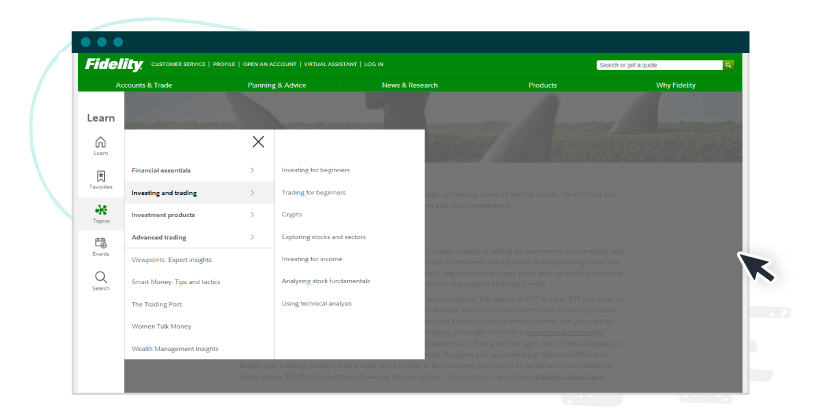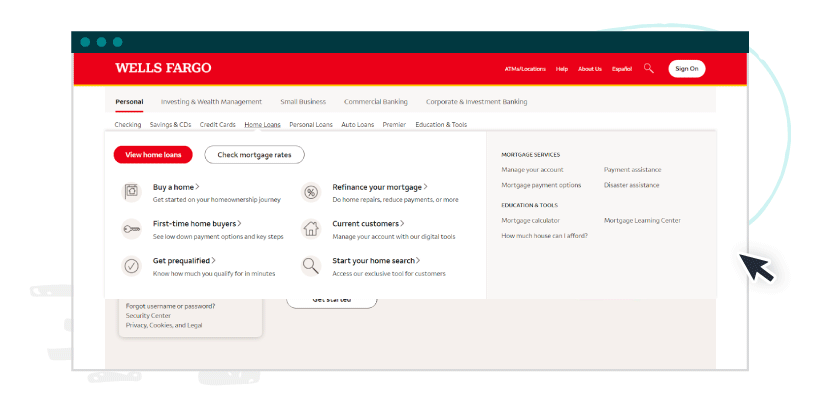In the finance industry, technical jargon often makes information dry and difficult to consume. But content marketing is changing all that.
Financial content marketing allows businesses to transform complex concepts into engaging content.
But is it worth the effort?

Financial Content Marketing and Its Important Role
Content marketing is an inbound marketing strategy that leverages various types of financial content. Some examples of content types you can use are blog posts, white papers, infographics, podcasts, and videos.
Some of the common objectives behind financial content marketing campaigns include:
- Generating awareness for a brand’s offerings.
- Increasing conversion rates.
- Building customer trust and loyalty.
Content marketing is unlike sales ads that directly pitch products and services to customers. Instead, it focuses on solving customer problems through genuinely helpful content. No selling is happening; only content that addresses your target audience’s nagging pain points.
The goal? Keep your brand top of mind when they’re ready to buy.

The Benefits of Content Marketing in Finance
69% of businesses are increasing their content marketing budgets — and for good reason.
Content marketing, when done right, comes with numerous advantages, including:
Improved organic search visibility
According to research, about 64% of the calls that financial services providers receive come from organic searches.
The reason? “Organic search is the super KPI of content marketing,” says Michael Brenner, CEO of Marketing Insiders Group.
When you optimize your website’s content for search engines, using financial keywords your target consumers are likely to use, you increase your search rankings.
This improves the likelihood of users clicking through to your website.
Additionally, content marketing keeps your finance website visible in search engines for sustained periods. Unlike paid advertising which stops bringing in traffic as soon as the campaign ends.
Positioning as thought leaders
The right financial content marketing strategy can quickly elevate your brand’s status as an industry thought leader. You become the go-to expert in your field by consistently publishing evergreen, well-optimized content that answers questions your target audiences are asking.
Aside from answers to common questions, these types of content can cement your company’s status as a trusted leader:
- In-depth analysis of industry events and trends.
- Research on the industry’s challenges and opportunities.
- Fresh perspectives on industry discussions.
Increased customer engagement
Want your audience to engage more with your brand?
Create social media posts, blogs, and interactive content such as polls, contests, challenges, and quizzes. These can encourage them to leave comments, participate in discussions, and share their opinions.
Also, short-form videos will continue to be a hit with consumers looking to learn about a product or service.
Examples of successful financial content marketing implementation
Sun Life’s Tools & Resources hub provides tips and tools to help families and individuals manage their money and health. The page includes three content categories: Health & Wellness, Money & Finances, and Tools & Calculators.

The Morgan Stanley Ideas podcast features stories about the world of finance, business, and technology. Morgan Stanley leaders offer their perspectives on recent market events, solidifying their authority in the field.

The Challenges of Content Marketing in Finance
Delivering high-quality content consistently is a common problem for content marketers across industries. However, the finance industry has unique aspects that add pitfalls to financial content marketing.
Regulatory constraints
Finance is a heavily regulated industry. Marketing activities must comply with various laws and regulations to avoid legal repercussions. As a result, financial marketers often resort to tried-and-tested but less creative content marketing strategy approaches.
Complex subject matter
The finance industry uses complex technical terminology that the average person has difficulty understanding.
Some examples are derivatives, capitalization, exchange-traded funds or ETFs, and options. And then, there are intangible concepts such as risk management, quantitative easing, securitization, and hedging. The value and benefits of these terms can be difficult to communicate.
Examples of financial companies overcoming these challenges
Fidelity Investment’s Learning Center introduces beginners to the world of investing and wealth management. It features topics such as investing and trading. But also the different types of investment products and even smart money tips. The site offers a topic filter and a search bar to help readers locate specific content faster.

Likewise, Wells Fargo’s website contains helpful information on a variety of topics. Including online trading, automated investing, credit cards, home loans, and debt consolidation. Relevant disclosures are visible at the bottom of each page.

Tailoring Content Marketing Strategies for Finance
For content marketing to meet the unique needs of the financial services industry, take note of the following best practices:
- Define your target audience. Consider their financial goals, pain points, motivations, and preferred communication channels. Then, create detailed buyer personas. This can help you craft content that addresses their specific needs and challenges.
- Focus on informative and educational content. Provide practical tips, actionable advice, and valuable insights. Focus on investing, retirement planning, homeownership, and other related topics. Make your content more accessible by minimizing jargon use.
- Segment your audience. According to 72% of customer experience (CX) leaders, “more personalization leads to greater customer loyalty.” Leverage data and analytics tools. They will help you personalize content according to your market’s specific needs and interests. Segment your audience based on their life stages, financial goals, buying habits, and other relevant criteria.
- Build trust and credibility. Establish trust through transparent communication, compliance with regulations, and industry expertise. Position your organization as a trusted go-to advisor.
- Use various content formats. Different people have different communication preferences. Some prefer text over graphics, but many prefer video. Consider creating content in different formats. For instance, blogs, podcasts, videos, infographics, webinars, and interactive content.
- Engage and interact with your audience. Enable comments. Host Q&A sessions. Promptly respond to feedback and questions. These strengthen relationships with your target consumers.
- Monitor, measure, and optimize your performance. Use analytics tools to track your financial metrics like engagement, conversion, and customer satisfaction. Measure them against internal and external benchmarks. Based on those insights, optimize your content or refine your strategies.
Dominate Your Industry with Financial Content Marketing
Content marketing success in the financial industry is a balancing act. You want helpful, informative content that addresses customer pain points. At the same time, you want your content to comply with relevant regulations.
At ClearVoice, we take great care in understanding the needs of your target consumers. Only then can we create compelling, trust-building content that resonates with your audience. Ready to get started? Our team of handpicked financial writers can help you unlock the full potential of content marketing. Reach out to speak to a content expert today.



